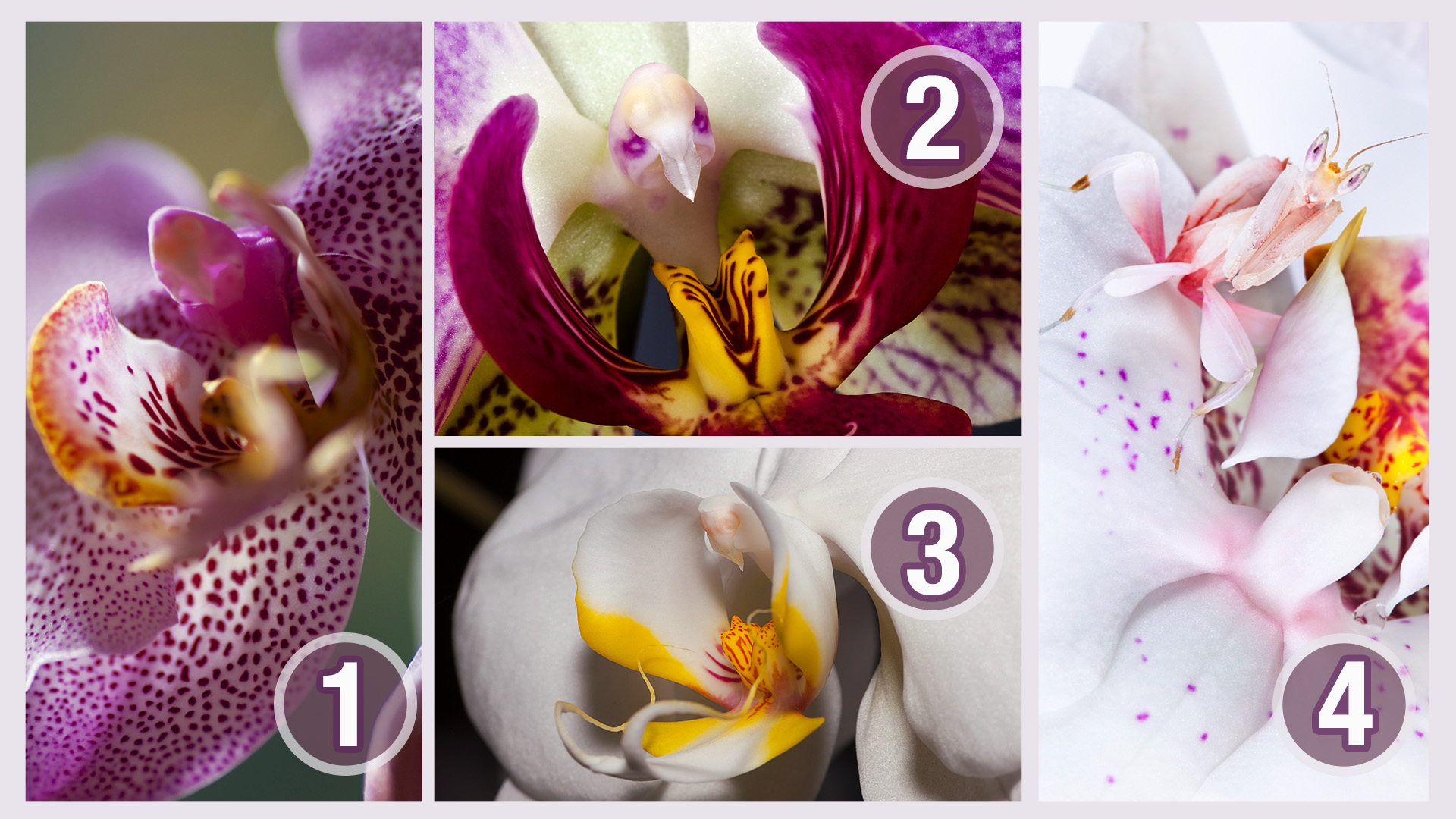
Mention the praying mantis, and the first image that appears in your head must be a green insect with a triangular head, elongated body and a pair of falcate forelegs that seem strong enough to perform kung fu.
The Northern Praying Mantis (Tang Lang) kung fu style is famous for positions that resemble the insect.
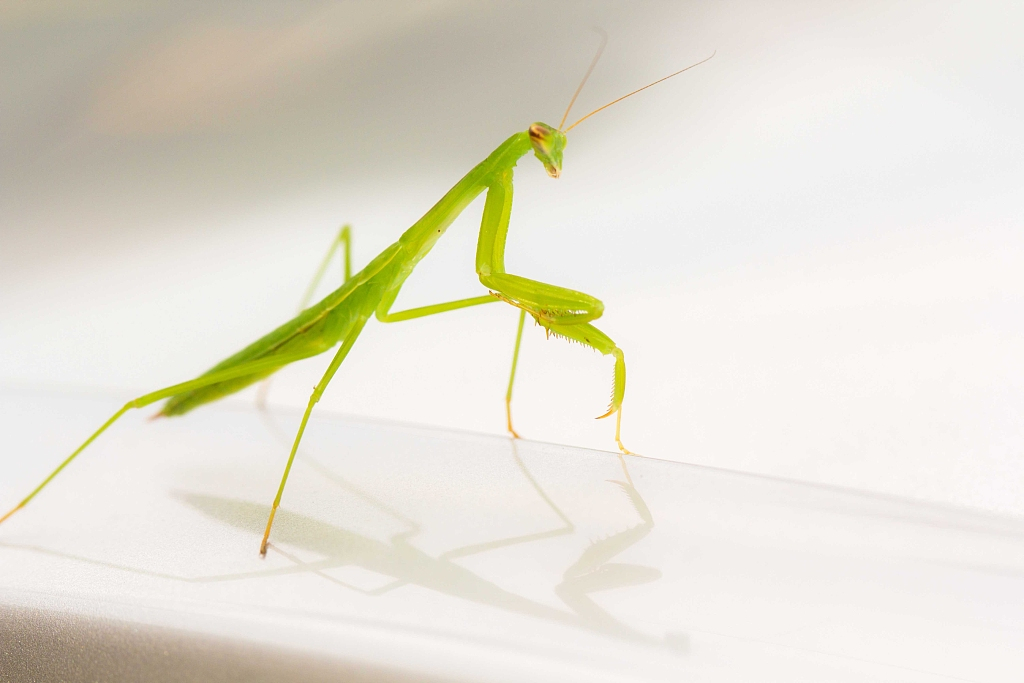
Praying mantis. /VCG Photo
As it frequently appears in forests and grassy areas, the praying mantis is typically green or brown in color.
However, some of these "kung fu masters" have adapted to their unique surroundings and feature an array of colors that allow them to hide and hunt effectively.
Orchid mantis
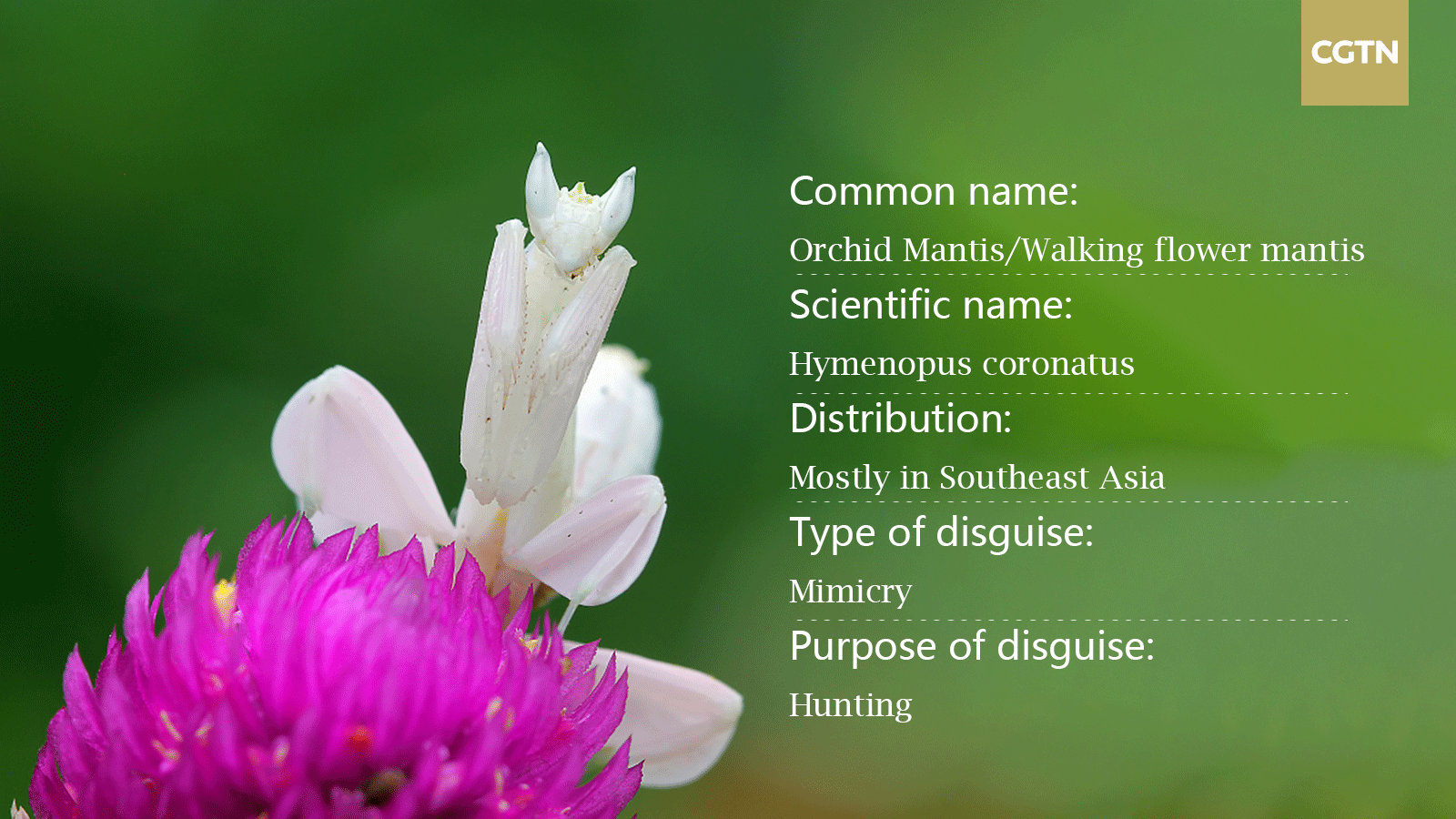
General information about the orchid mantis. /CGTN Graphics
The orchid mantis, similar to other flower mantises, resembles its habitat – the orchid.
It mimics a part of the flower and patiently waits for its prey to come knocking on the door.
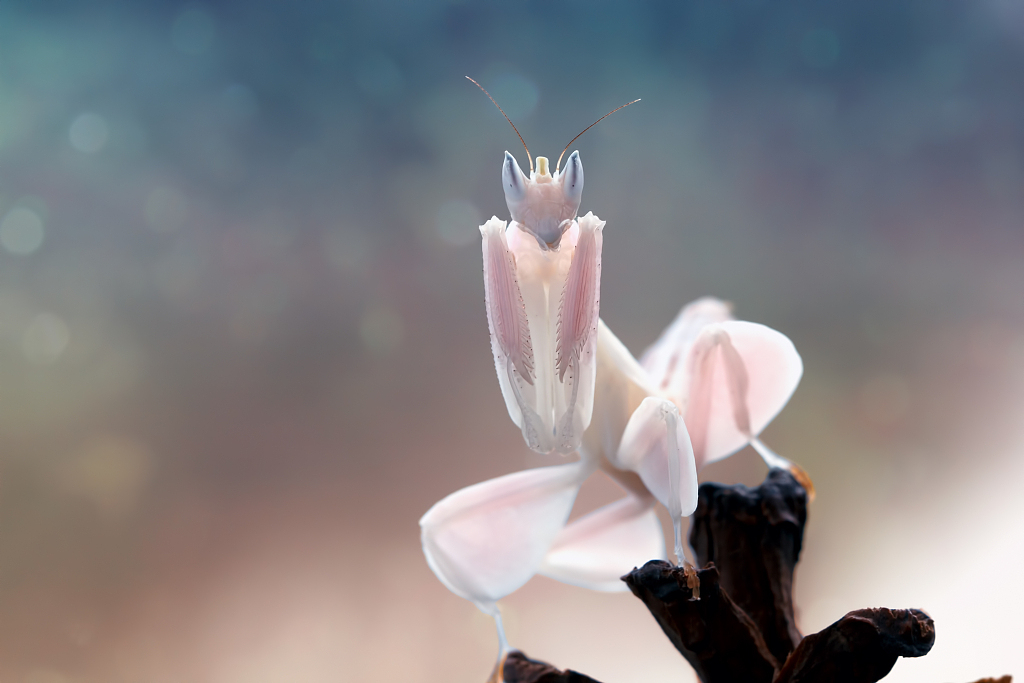
Orchid mantis. /VCG Photo
Living in rainforests with a variety of orchids, the orchid mantis has the ability to camouflage itself by changing colors to match individual flowers perfectly. This camouflage not only helps the orchid mantis to hunt, but also serves as a form of protection against predators.
Read more about the orchid mantis
Spiny flower mantis
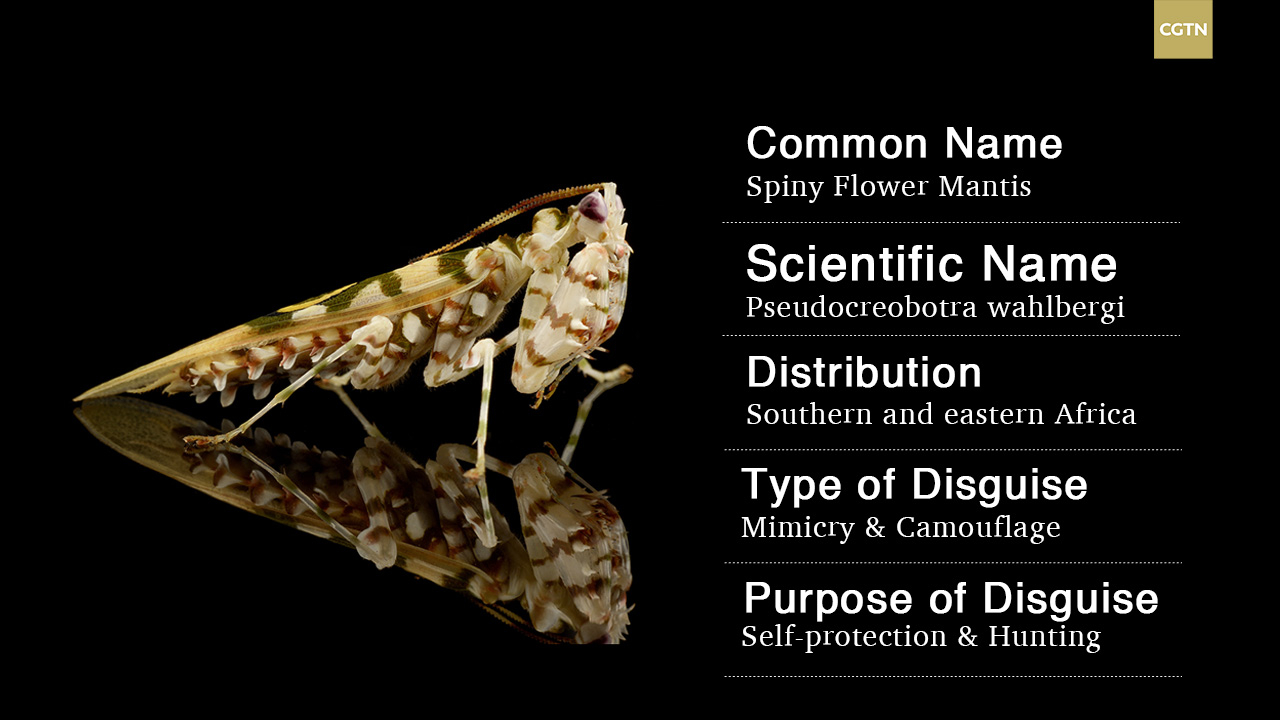
General information about the spiny flower mantis. /CGTN Graphic
The spiny flower mantis has a peculiar body that is covered in spines. It also has wings with dots that resemble eyes. When threatened, the spiny flower mantis will spread its wings upward to reveal the two "eyes" in order to scare its enemy off.
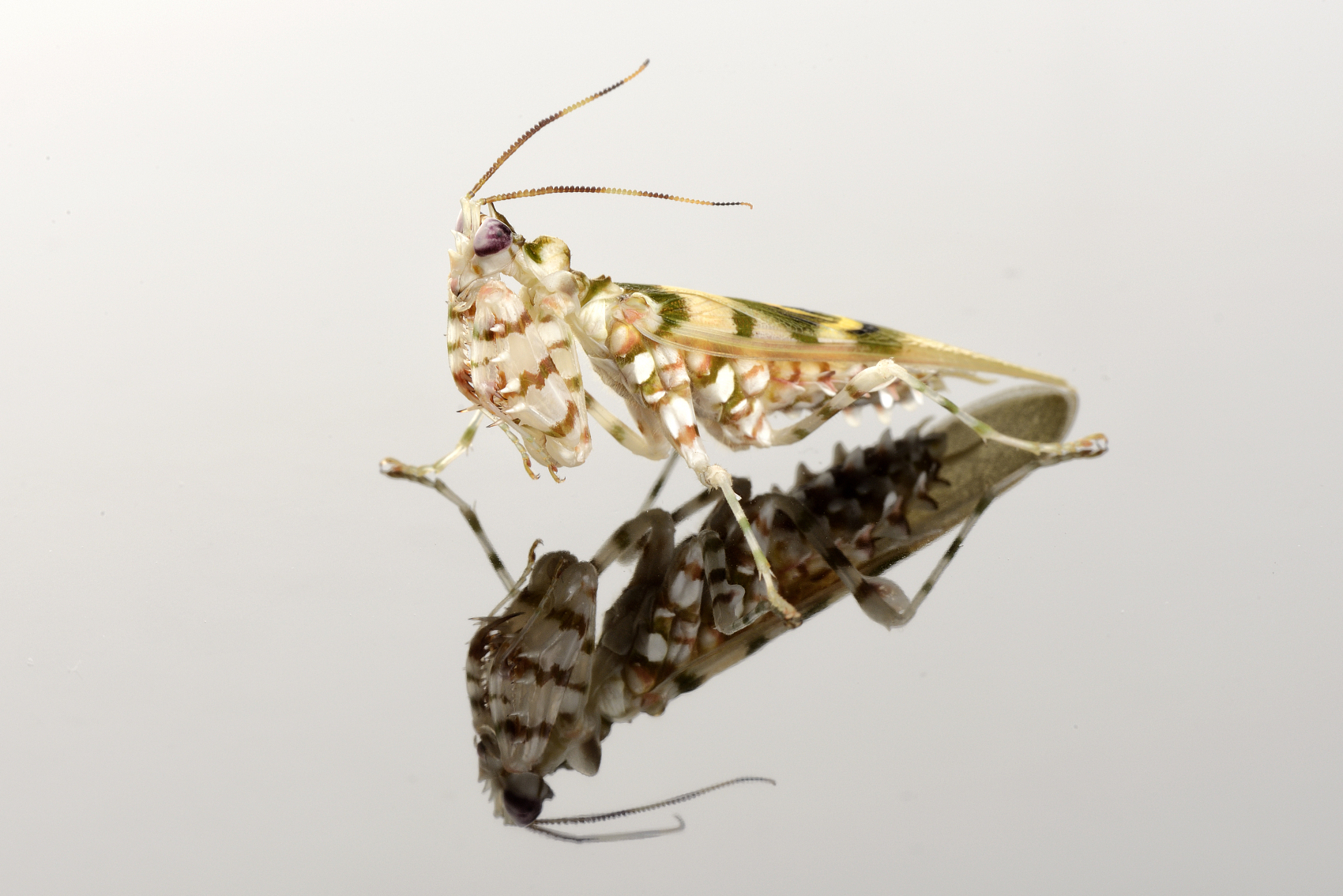
An adult spiny flower mantis. /VCG Photo
The patterns on its body become good camouflage while it is resting between wood and leaves.
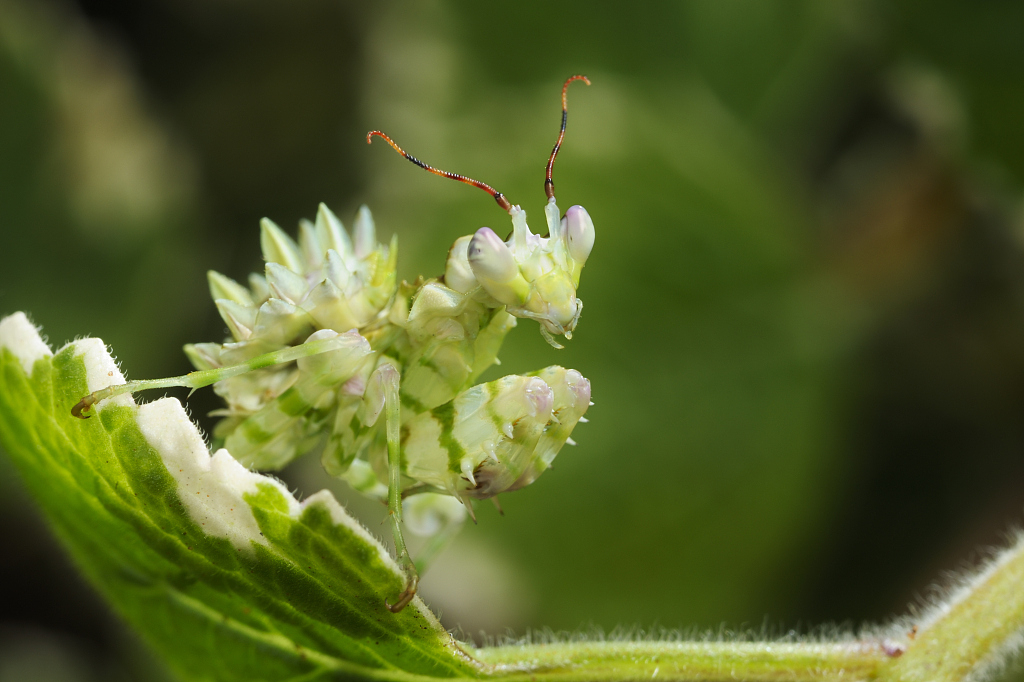
A young spiny flower mantis. /VCG Photo
The spines assist the mantis when hunting for food. It mimics the texture of a flower and attracts insects looking to pollinate it before devouring them.
Devil's flower mantis
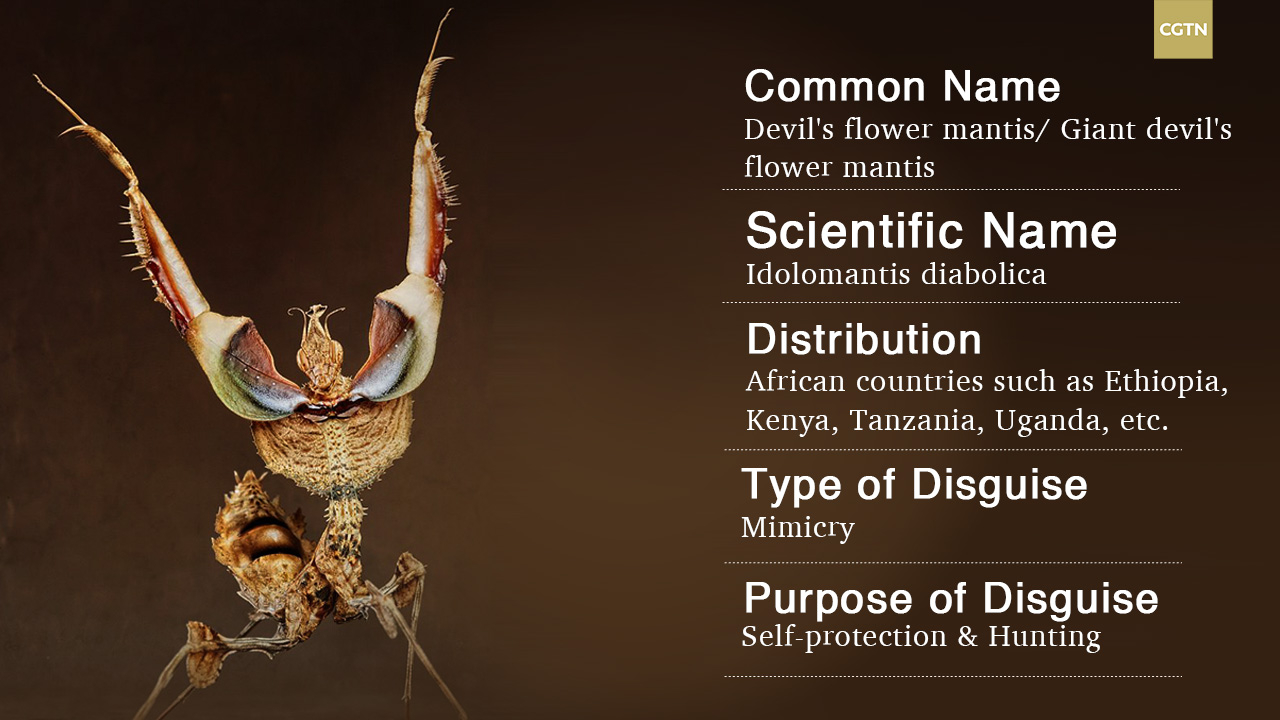
General information about the devil's flower mantis. /CGTN Graphic
With an average size of 10-13 centimeters in length, the devil's flower mantis is one of the largest species of mantis.
This mantis is famous for its "dancing pose," where it will rear up its body and forelegs to expose its vibrantly colored hidden flaps and then shift its wings left to right.
This amazing "dance" is actually a defense mechanism for the mantis. If threatened, it will use this technique to confuse, distract or even scare off its predators.
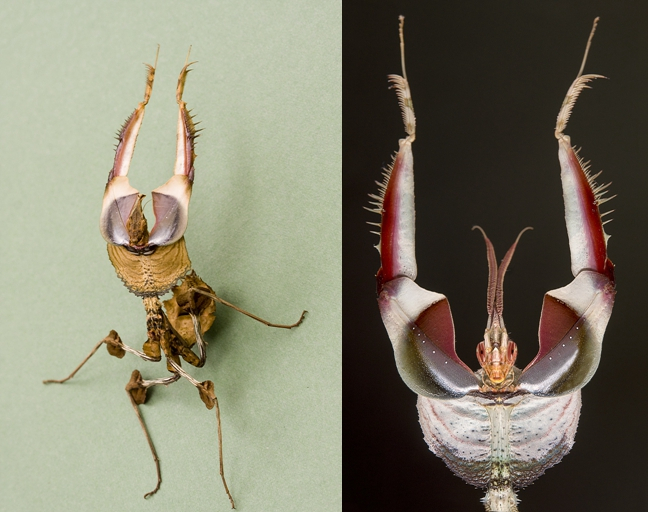
A threatened devil's flower mantis shows its colorful flaps. /VCG Photo
When hunting, the devil's flower mantis will conceal its colorful flaps while impersonating a flower, and use the different shades of green and brown on its back as camouflage while remaining motionless.
After waiting patiently, it will grab its prey and enjoy a meal.
About the 'Disguise in Nature' series
Camouflage and mimicry are two ways for creatures to disguise themselves. Disguises can either help them escape danger, or make them perfect predators when hunting for food.
In this series, we are going to look at several species that are masters of disguise. For each article, there will be a game of hide and seek with the introduced species.
(Cover image via VCG, designed by CGTN's Gao Hongmei.)
(If you want to contribute and have specific expertise, please contact us at nature@cgtn.com.)

Copyright © 2018 CGTN. Beijing ICP prepared NO.16065310-3
Copyright © 2018 CGTN. Beijing ICP prepared NO.16065310-3
